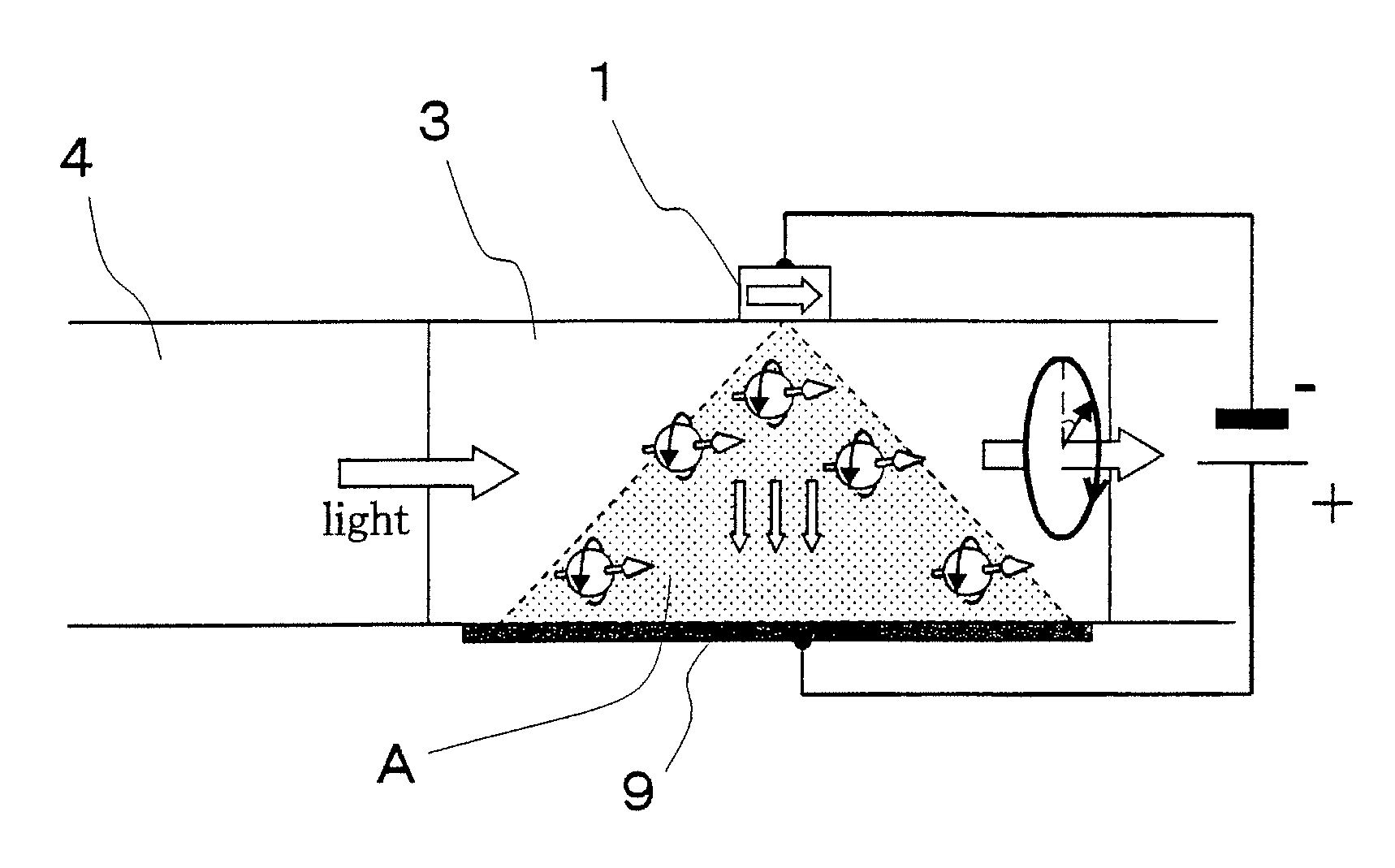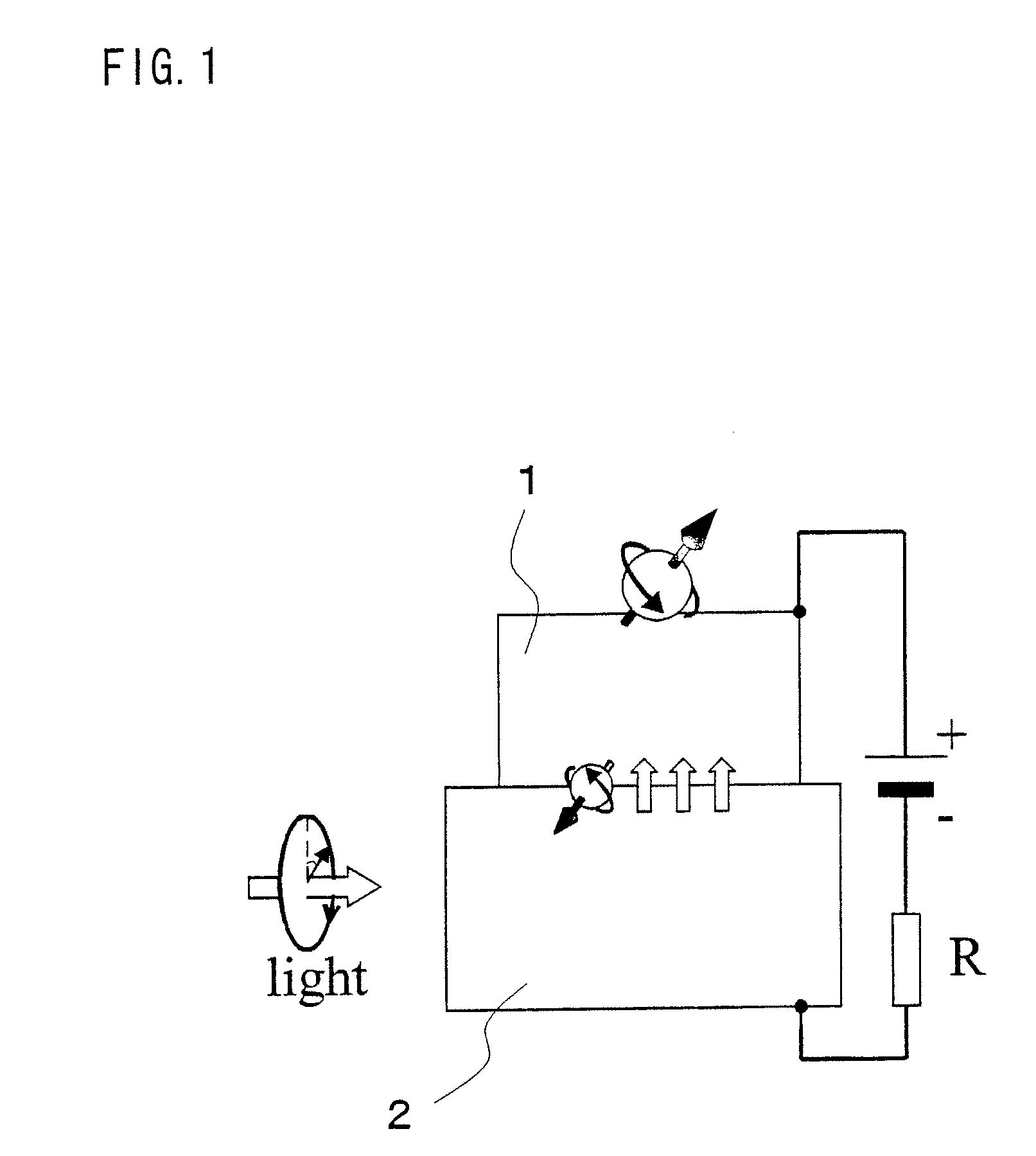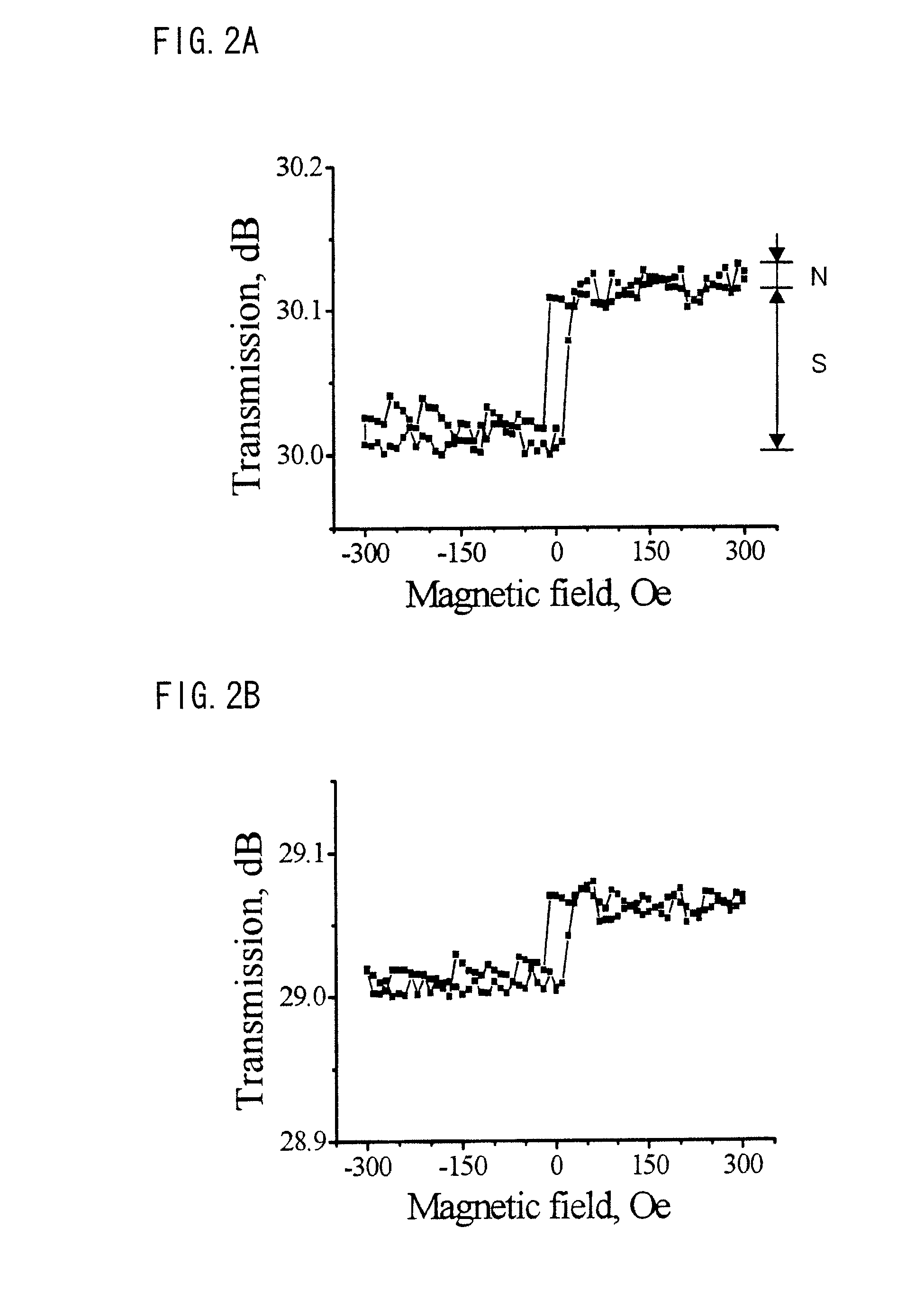Nonvolatile Optical Memory Element, Memory Device, and Reading Method Thereof
a memory element and non-volatile technology, applied in the direction of information storage, static storage, digital storage, etc., can solve the problems of limiting the speed of data processing by opto-electronic conversion, the operation speed of these devices is the electron intersubband lifetime, and the operation speed of these devices is rather long in a semiconductor, so as to achieve a widening a significant expansion of the effective magneto-optical region
- Summary
- Abstract
- Description
- Claims
- Application Information
AI Technical Summary
Benefits of technology
Problems solved by technology
Method used
Image
Examples
first embodiment
[0051]A nonvolatile optical memory element according to the first embodiment of the present invention includes an optical waveguide, a semiconductor amplification region, a nanomagnet, an electrode (electric contact), and an optical polarizer. The above-mentioned optical waveguide is constituted by a core region buried between two layers of a clad region. The refractive index of the core region is higher than the refractive index of the clad region. The semiconductor amplification region includes three layers: an n-type semiconductor, an undoped semiconductor, and a p-type semiconductor. The semiconductor amplification region is connected with the optical waveguide via which light comes in and out. A micro-sized ferromagnetic body in a state of a single domain (single-magnetic structure) is called a nanomagnet. An approximate size of the ferromagnetic body is not more than 200 nm×200 nm. Magnetization of the nanomagnet takes two stable magnetization directions along the direction of...
second embodiment
[0058]The second embodiment relates to a memory device constituted by a plurality of nonvolatile optical memory elements explained in the first embodiment. The memory device of the second embodiment includes a plurality of nonvolatile optical memory elements, a short optical pulse source, and optical waveguides. The optical waveguides connect the respective nonvolatile optical memory elements to the short optical pulse source, and the optical waveguides are combined at an output side of the memory device. The lengths of the optical waveguides are adjusted so that one optical pulse, after passing through different memory element cells, reaches the output side with different optical delays.
[0059]A method for reading data stored in the memory device of the second embodiment includes the steps of: applying a short electrical pulse to all the memory elements; supplying a short optical pulse to all the memory elements; and detecting intensity of a consecutive optical pulse train. The inte...
example 1
[0061]FIG. 7 shows a structural example of the nonvolatile optical memory element used in the first and second embodiments. A spin-photon memory in Example 1 includes a substrate 46, an optical waveguide buffer layer 45, a waveguide core layer 44, a p-i-n semiconductor detector 43, which functions as a semiconductor optical amplifier, a buffer layer 42, and a nanomagnet 41. These members are stacked in this order. The substrate 46 is made of a p-type GaAs 38, and on one side of the substrate 46 is disposed a Cr / Au electrode 39. On another side of the substrate 46 which is opposite to the side of the substrate 46 on which the electrode 39 is disposed, the optical waveguide buffer layer 45 made of a p-type Al0.5Ga0.5As 37 and the optical waveguide core layer 44 made of a p-type Al0.3Ga0.7As 36 are provided. The p-i-n semiconductor detector 43, which functions as a semiconductor optical amplifier, is constituted by a p-type GaAs 35, an i-type GaAs 34, and an n-type GaAs 33. The nanomag...
PUM
 Login to View More
Login to View More Abstract
Description
Claims
Application Information
 Login to View More
Login to View More - R&D
- Intellectual Property
- Life Sciences
- Materials
- Tech Scout
- Unparalleled Data Quality
- Higher Quality Content
- 60% Fewer Hallucinations
Browse by: Latest US Patents, China's latest patents, Technical Efficacy Thesaurus, Application Domain, Technology Topic, Popular Technical Reports.
© 2025 PatSnap. All rights reserved.Legal|Privacy policy|Modern Slavery Act Transparency Statement|Sitemap|About US| Contact US: help@patsnap.com



